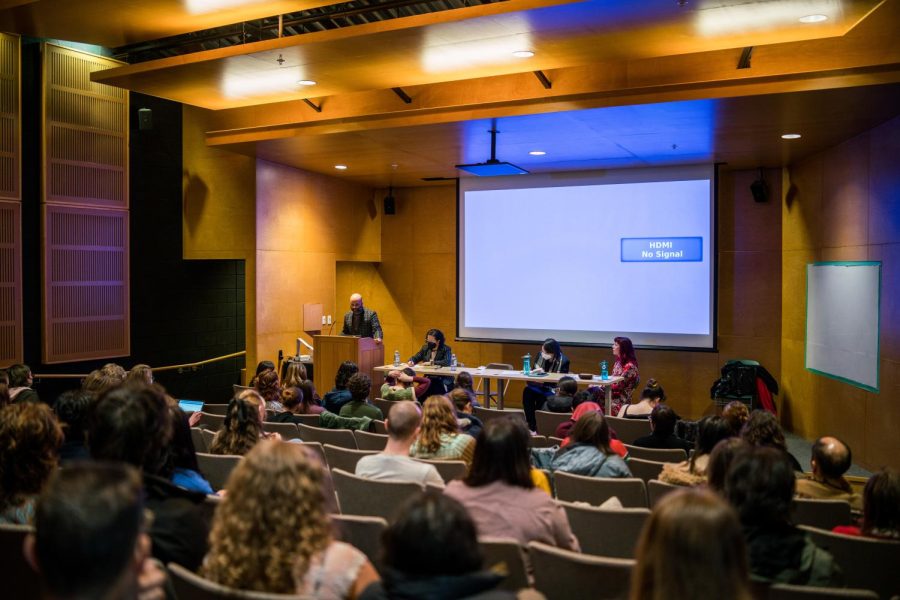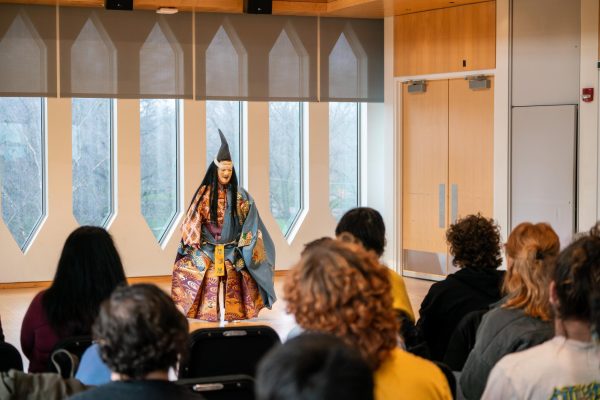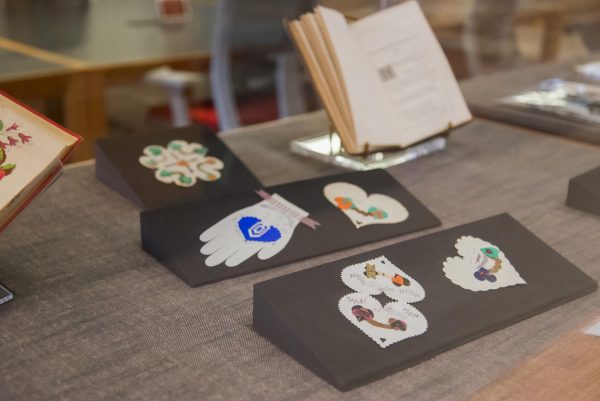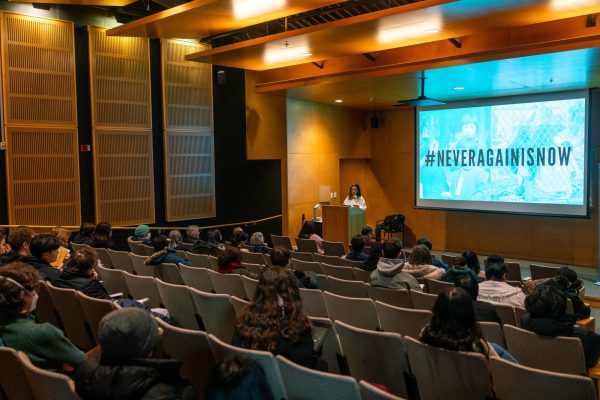Panelists Bring Innovative Perspective to European Renaissance at Symposium
Renaissance Scholars, Alice Dailey, Jennifer Nelson, and Adhaar Noor Desai presented their ideas at a symposium that took place in the Hallock Auditorium in the Adam Joseph Lewis Center for Environmental Studies on Wednesday evening.
Over the last week, the English department of Oberlin College hosted three scholars exploring innovative new ways to understand the European Renaissance. Alice Dailey, professor of English at Villanova University; Jennifer Nelson, assistant professor of early modern art at the University of Wisconsin–Madison; and Adhaar Noor Desai, assistant professor of literature at Bard College, presented their ideas at a symposium titled “Why the Renaissance?: How Three Scholars Reimagine the Past” that took place in the Hallock Auditorium in the Adam Joseph Lewis Center for Environmental Studies on Wednesday evening. In addition to this symposium, each of the professors led workshops that explored the specific way they as scholars have explored the Renaissance and its continued importance in both academic and nonacademic circles. These scholars were picked by Professor of English and Comparative Literature Wendy Beth Hyman due to their innovative outlook. Not only are these professors colleagues and friends, but Professor Hyman views them as “heroes” who are incredibly important to their field, because they value the legacy of the Renaissance, despite having complicated relationships with classic literature due to the underrepresentation of many of their intersectional identities.
In a panel discussion led by Hyman, each scholar spoke about what the Renaissance means to them and the choices they make in studying it. Desai said that he was led to study Shakespeare by both a lack of choice due to curriculum requirements in India, and the optimism that by studying how Renaissance writers and poets would have learned, it is possible to return them to their historical context. The period in which Renaissance scholars were writing was one where failure to conform to contemporary literary standards was necessary in pushing linguistic boundaries, an important context that is often forgotten today. Desai believes that it is important to compare the teaching and writing instruction of the Renaissance to the teaching and writing instruction of the modern era and to incorporate some of the lost techniques regarding failure into the way we teach today. This is a radical stance to have, considering that the world of instruction and teaching is set in its ways and that it takes time to adapt to new ideas.
Next, Nelson spoke about art in the Renaissance and how the consumer of any kind of art, be it visual or literary, comes to witness that art with a history of knowledge, knowledge that may be contradicted or backed up by what they are observing. Renaissance people were residing in a time of great anxiety; their time was full of discrepancies that would make anyone worried about what was to come. Visual art, as well as other forms such as literature, contained deviation from the established Western world view, which was focused on Christian ideals. This caused creators to switch from the clear path that had been laid out for them by their predecessors to a path they created for themselves. Finally, Professor Dailey wove Shakespearean characters into her own life story, recounting a moment toward the end of her mother’s life by relating it to a play. In this heartfelt piece, Dailey insisted that the Renaissance is “not dead yet,” a term she made sure to mention is borrowed from disability rights advocacy. Her mother requested that she read aloud Hamlet’s soliloquy, “To be or not to be,” in the hospital. This resulted in her mother falling into a dream about performing, addressing the hospital room as her stage. From there, Dailey launched the audience into a world where her ailing mother assumes the roles of Hamlet, King Lear, and Richard II: all ill-fated characters from Shakespeare’s works. The Renaissance itself means a rebirth of something long dead, and was a death obsessed culture, so it is by no means difficult to relate the experience of watching a loved one in their last stages of life to art from the period. In this way, the hospital becomes a theatre.
There were 75 people in attendance on Wednesday evening, from students currently enrolled in courses pertaining to Renaissance art and literature to staff members and professors interested in hearing from their peers. Additionally, many people attended the workshops hosted by the scholars. 47 people attended Dailey’s workshop, 25 attended Nelson’s and 24 people attended Desai’s.
These guest speakers are part of a larger program organized by Professor Hyman and Professor Danielle Skeehan, chair of the Oberlin English department, titled Reimagining the Renaissance. Events related to this program will continue throughout the semester, bringing other scholars such as Deborah Harkness. Harkness is a professor of European history and the history of science at the University of Southern California, but is perhaps better known as the author of A Discovery of Witches and the rest of the All Souls trilogy.












